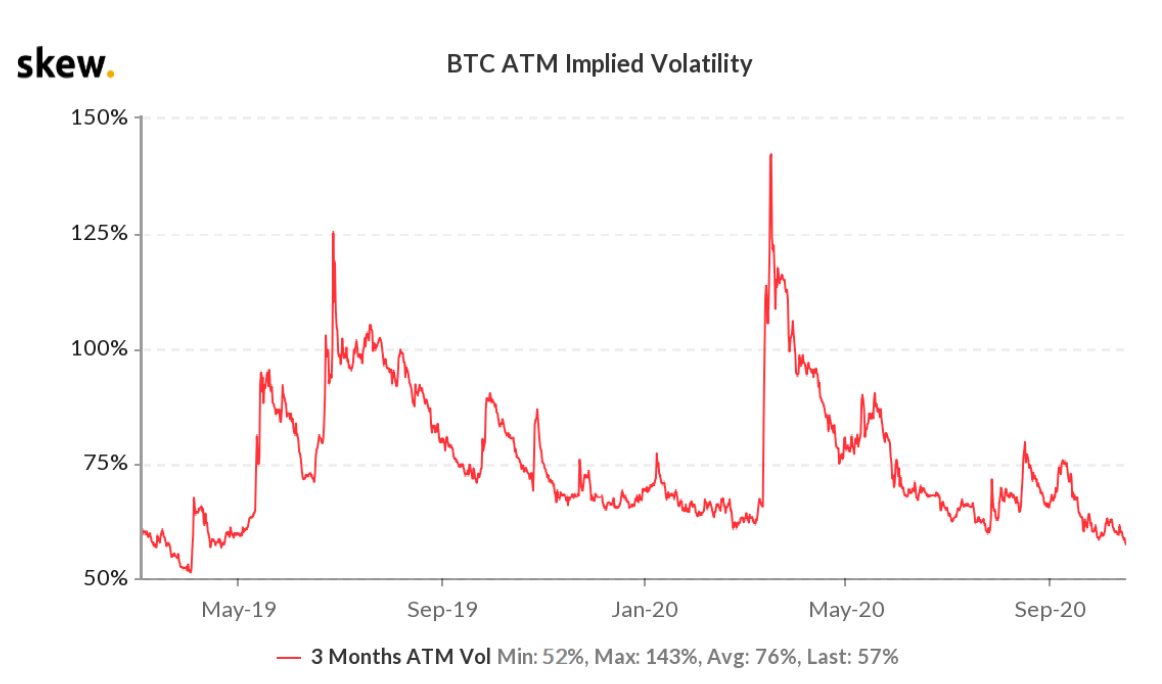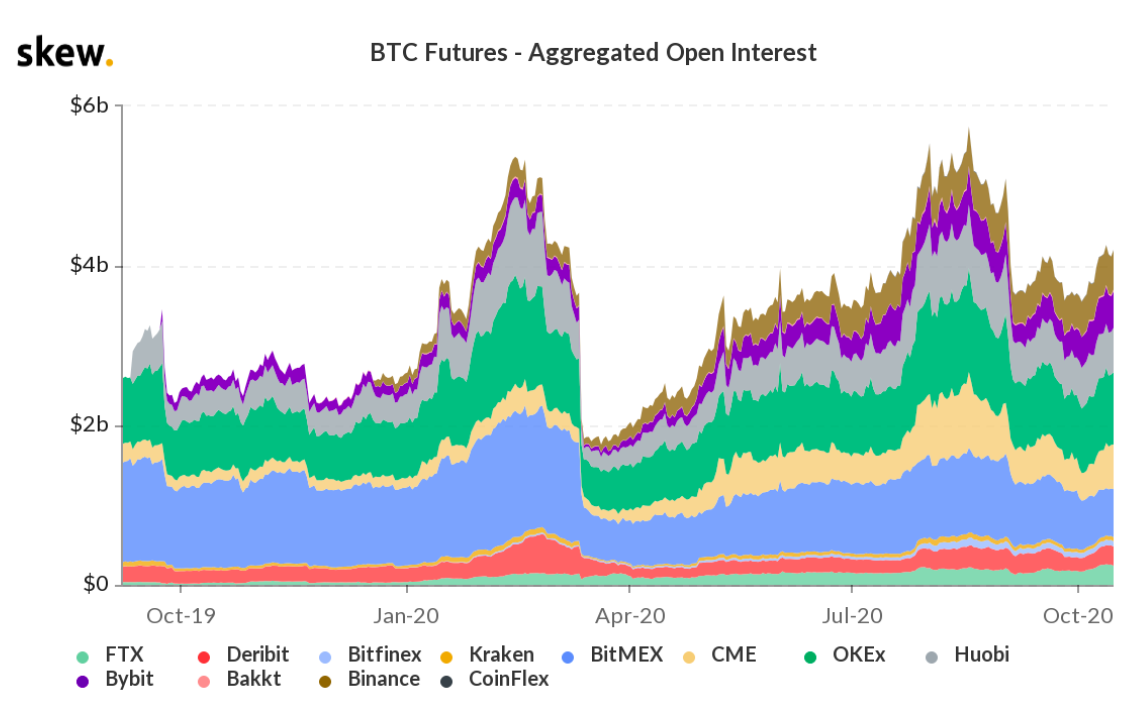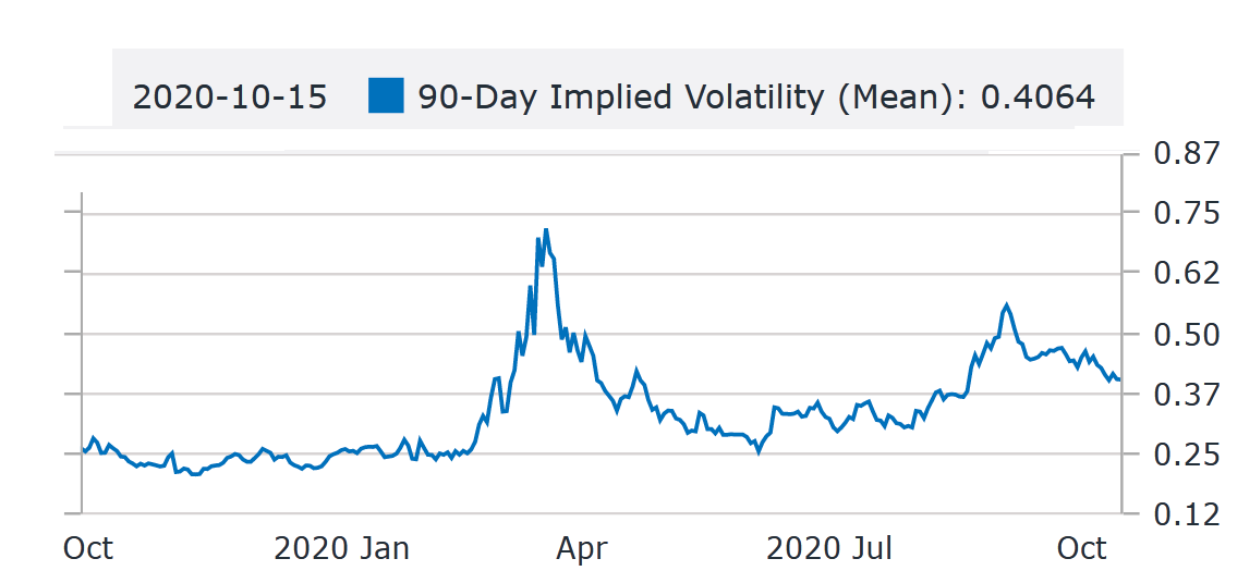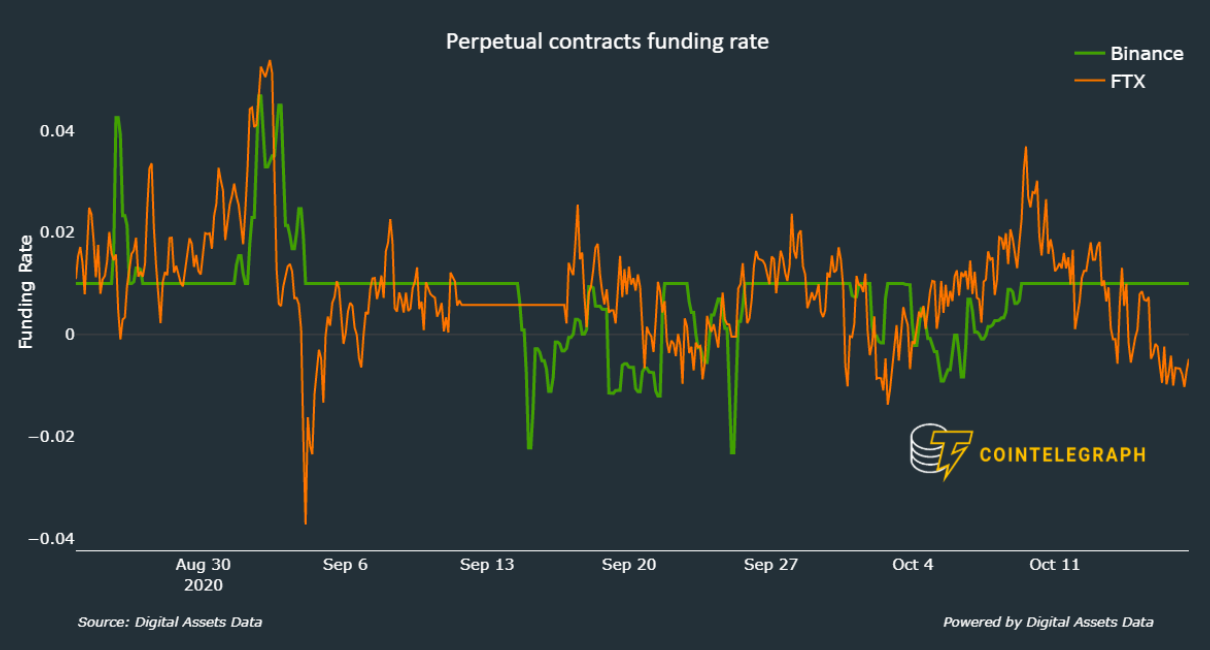Bitcoin (BTC) options aggregate open interest has increased to $2 billion, which is 13% below the all-time high. Although the open interest is still heavily concentrated on Deribit exchange, the Chicago Mercantile Exchange (CME) has also reached $300 million.
In simple terms, options derivatives contracts allow investors to buy protection, either from the upside (call options) or downside (put options). Even though there are some more complex strategies, the mere existence of liquid options markets is a positive indicator.
For example, derivative contracts allow miners to stabilize their income which is tied to a cryptocurrency’s price. Arbitrage and market-making firms also utilize the instruments to hedge their trades. Ultimately, deeply liquid markets attract larger participants and increase their efficiency.
Implied volatility is a useful and primary metric that can be extracted from options pricing. Whenever traders perceive increased risk of larger price oscillations, the indicator will shift higher. The opposite occurs during periods when the price is flat or if there is expectation of milder price swings.

Volatility is commonly known as a fear indicator, but this is mostly a backward-looking metric. The 2019 spike seen on the above chart coincided with the $13,880 peak on June 26, followed by a sudden $1,400 decline. The more recent volatility spike from March 2020 happened after a 50% decline occurred in just 8 hours.
Indicators signal a wild price swing in the making
Periods of low volatility are catalysts for more substantial price movements as it signals that market makers and arbitrage desks are willing to sell protection on lower premiums.
This is because increasing derivatives open interest leads to more extensive liquidations when a sudden price change occurs.
Investors then need to shift their focus to futures markets to assess whether a potential storm is brewing. Increasing open interest denotes either a higher number of market participants or that larger positions are being created.

The current $4.2 billion in aggregate open interest might be modest compared to the August peak at $5.7 billion, but is still relevant.
A couple of reasons might be holding back a larger figure, including the current BitMEX CFTC charges and KuCoin’s $150 million hack.
High volatility is another critical factor holding back the open interest on Bitcoin derivatives.
Despite 57% being the lowest figure in the past 16 months, it still represents a sizable premium, especially for longer-term options. Both options and futures have a lot of synergy, as more advanced strategies combine both markets.
A buyer betting on a $14K strike for the March 21 expiry in 160 days must pay a 10% premium. Therefore, the price at expiry must reach $15,165 or 34% above the current $11,300.

As a comparison, Apple (AAPL) shares hold a 41% 3-month volatility. Although higher than the S&P 500’s 29%, the long-term impact versus Bitcoin’s 47% has striking effects. The same 34% upside for a March 2021 call option for AAPL shares has a 2.7% premium.
To put things in perspective, if an APPL share were priced at $11,300, this March 2021 option would cost $308. Meanwhile, the BTC one is trading at $1,150, which is almost four times more expensive.
Betting on $20K? Options might not be the best way
Although there is an implied cost to carrying a perpetual futures position for more extended periods, it hasn’t been burdensome. This is because the funding rate of perpetual futures is usually charged every 8 hours.

The funding rate has been oscillating between positive and negative for the past couple of months. This results in a net neutral impact on buyers (longs) and short sellers that might have been carrying open positions.
Due to its inherent high volatility, Bitcoin options might not be the optimal way to structure leveraged bets. The same $1,150 cost of the March 2021 option could be used to acquire Bitcoin futures using a 4x leverage. This would yield a $1,570 gain (136%) once Bitcoin reaches the same 34% upside required for the option break even.
The above example does not invalidate options use, especially when building strategies that include selling call or put options. One should keep in mind that options have a set expiry. Therefore if the desired price range occurs only the following day, it yields no gain at all.
For the bulls out there, unless there is a specific price range and time frame in mind, it seems for now sticking with perpetual futures is the best solution.
The views and opinions expressed here are solely those of the author and do not necessarily reflect the views of Cryptox. Every investment and trading move involves risk. You should conduct your own research when making a decision.



